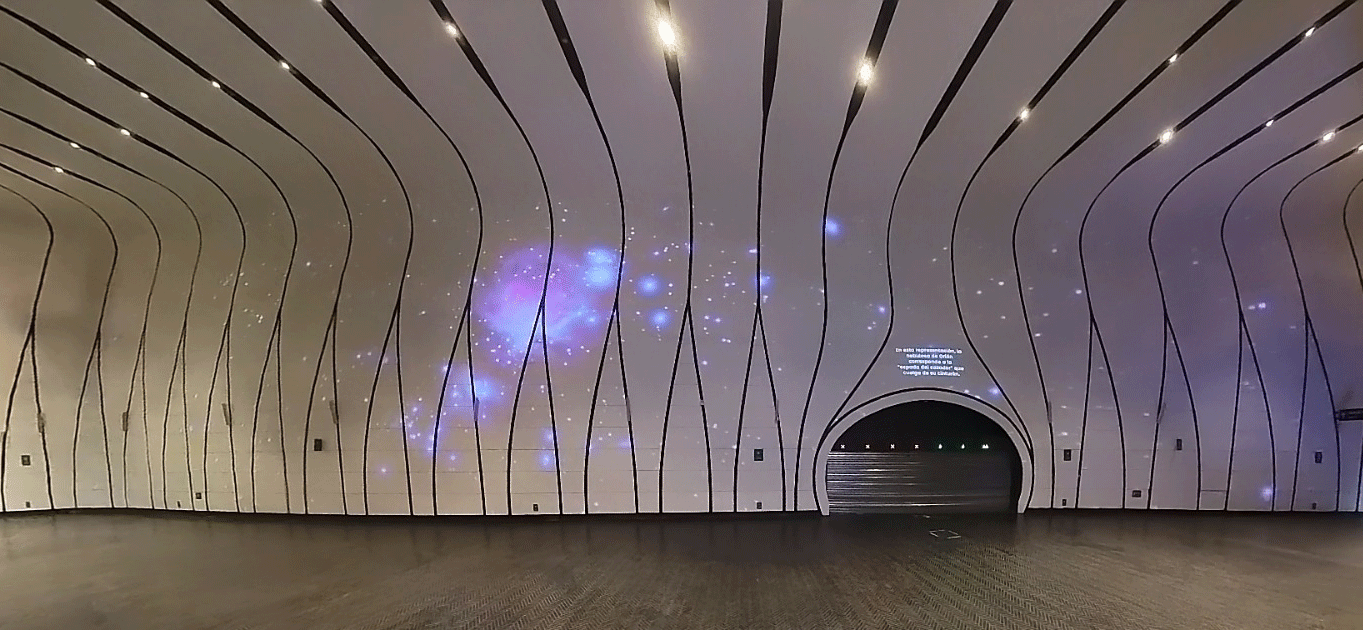[:en]The 1mt diameter-telescope is the first of a network of eight to be installed around the globe as part of the framework of the SONG (Stellar Observations Network Group) project, in which MAS Associate Researcher, Márcio Catelan, participates.
In order to take advantage of the potential of a network of ultra-modern telescopes, operating day and night, seven days a week, last October 25th the first telescope of the SONG project was officially launched – out of a total of eight – at the Teide Observatory of the Instituto de Astrofísica de Canarias (IAC) in Tenerife, Spain.
The project focuses on the study of bright stars and the planetary systems around them and, thanks to the high level of detail that the eight nodes will deliver when they are working together, will allow unprecedented studies of star seismology or asteroseismology.
“Currently, the study of the internal structure of stars is done with great difficulty, even using space telescopes such as CoRoT and Kepler, which provide us with images of the highest quality. From Earth, the day/night effect does not allow us to continuously monitor its brightness. SONG’s aim, through this network of telescopes, is to break this barrier, thanks to the fact that we will be able to observe them 24 hours a day for many months. Moreover, the observations, unlike what happens with the space missions indicated, will be spectroscopic and of very high resolution, which will allow to decompose the light that comes from the stars. This will allow us to measure the speed of movement of the surface layers of stars and also detect the effect brought by the possible presence of exoplanets orbiting them. The combined effects of very high spectral resolution and 24/7-time coverage will allow an unprecedented qualitative leap in the areas of exoplanets and asteroseismology,” Márcio Catelan explains, MAS Associated Researcher and part of this project.
SONG Network
The new telescope installed in the Canary Islands, officially called The Hertzsprung SONG Telescope, is small compared to other instruments in the world. It has a diameter of one meter, but is optimized to meet the objectives of the project, since along with the other seven – which will have similar characteristics – will function as one.
This newly inaugurated prototype is remotely controlled from the Stellar Astrophysics Centre located at the University of Aarhus, Denmark, and is funded, in addition to this institution, by the Carlsberg Foundation, the VILLUM FONDEN Foundation, the Danish Council for Independent/Natural Sciences Research (FNU), the European Research Council, the University of Copenhagen and the IAC.
According to Márcio Catelan, in the long term it is expected that another node that is already delivering some results in China will come into official operation, and the rest will possibly be built in Hawaii, Australia, South Africa, the United States, New Zealand and even Chile.
“In the Millennium Institute of Astrophysics, we want to involve more and more young researchers in topics related to star seismology in order to take advantage of these instruments and because it is one of the most vibrant areas of astrophysics today. With this we will be contributing with the development of this area in Chile,” the researcher ends, who is also Professor at the Instituto de Astrofísica of Universidad Católica.
More information: http://song.au.dk/[:es]El telescopio, de un metro de diámetro, es el primero de una red de ocho que se instalarán en todo el globo en el marco del proyecto SONG (Stellar Observations Network Group), en el que participa el Investigador Asociado del MAS, Márcio Catelan.
Con el objetivo de aprovechar la potencialidad de una red de telescopios ultra-modernos, funcionando día y noche, los siete días a la semana, el pasado 25 de octubre se dio el vamos oficial al primer telescopio del proyecto SONG – de un total de ocho- en el Observatorio Teide del Instituto de Astrofísica de Canarias (IAC) en Tenerife, España.
El proyecto está enfocado en el estudio de estrellas brillantes y los sistemas planetarios alrededor de ellas y además, gracias al gran nivel de detalle que entregarán los ocho nodos cuando se encuentren funcionando en conjunto, permitirá estudios sin precedentes de sismología de estrellas o asterosismología.
“Actualmente, el estudio de la estructura interna de las estrellas se hace con mucha dificultad, incluso mediante telescopios espaciales como CoRoT y Kepler, que nos entregan imágenes de altísima calidad. Desde la Tierra, el efecto día/noche no nos permite monitorear continuamente su brillo. Lo que pretende SONG, a través de esta red de telescopios, es romper esa barrera, gracias a que podremos observarlos 24 horas al día por muchos meses. Es más, las observaciones, a diferencia de lo que ocurren con las misiones espaciales señaladas, serán espectroscópicas y de altísima resolución, lo que permitirá descomponer la luz que llega desde las estrellas. Eso nos permitirá medir la velocidad del movimiento de las capas superficiales de las estrellas y asimismo detectar el efecto acarreado por la posible presencia de exoplanetas que las orbiten. Los efectos combinados de altísima resolución espectral y cobertura temporal 24/7 permitirá un salto cualitativo sin precedentes, en las áreas de exoplanetas y asterosismología”, explica Márcio Catelan, Investigador Asociado de MAS y parte de este proyecto.
La Red SONG
El nuevo telescopio instalado en las Islas Canarias, llamado oficialmente The Hertzsprung SONG Telescope, es pequeño comparado con otros instrumentos en el mundo. Tiene un metro de diámetro, pero está optimizado para cumplir con los objetivos del proyecto, ya que junto a los otros siete – que tendrán similares características- funcionarán como uno solo.
Este prototipo que acaba de ser inaugurado es controlado remotamente desde el Stellar Astrophysics Centre ubicado en la Universidad de Aarhus, Dinamarca, y es financiado, además de esta institución, por la Fundación Carlsberg, la Fundación VILLUM FONDEN, el Consejo Danés para la Investigación Independiente/ Natural Sciences (FNU), el Consejo Europeo de Investigación, la Universidad de Copenhague y el IAC.
Según Márcio Catelan, en el largo plazo se espera que entre en funcionamiento oficial otro nodo que ya está entregando algunos resultados en China, y sean construidos el resto posiblemente en Hawaii, Australia, Sudáfrica, Estados Unidos, Nueva Zelanda e incluso Chile.
“En el Instituto Milenio de Astrofísica cada vez queremos involucrar más investigadores jóvenes en temas relacionados con sismología de estrellas para poder sacarle provecho a estos instrumentos y porque es una de las áreas más vibrantes de la astrofísica actual. Con ello estaremos aportando con el desarrollo de esta línea en Chile”, concluye el investigador, quien además es profesor titular del Instituto de Astrofísica de la Universidad Católica.
Más información: http://song.au.dk/.[:]













